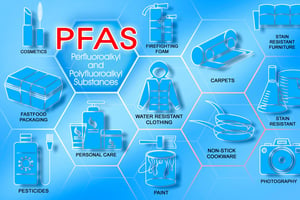The FDA initiated a sampling assignment in 2017 to collect fresh cilantro, parsley, and basil. The...
FDA’s Microbiological Sampling Programs
FDA’s Microbiological Sampling Programs
By Laurie Post, Ph.D.
 The FDA’s Preventive Controls for Human Food rule focuses on consumer protection from foodborne hazards such as pathogenic bacteria by requiring food manufacturers to take steps to prevent contamination. Prevention-based systems require information and data to first identify and then continually verify control of food-borne hazards. Environmental monitoring and product testing are examples of verification activities facilities can use to assure the effectiveness of preventive controls for microbial hazards and also identify potential sources of contamination that can be preemptively eliminated. Without control, contamination from the environment could lead to contamination of the finished product.
The FDA’s Preventive Controls for Human Food rule focuses on consumer protection from foodborne hazards such as pathogenic bacteria by requiring food manufacturers to take steps to prevent contamination. Prevention-based systems require information and data to first identify and then continually verify control of food-borne hazards. Environmental monitoring and product testing are examples of verification activities facilities can use to assure the effectiveness of preventive controls for microbial hazards and also identify potential sources of contamination that can be preemptively eliminated. Without control, contamination from the environment could lead to contamination of the finished product.
During FDA inspections, investigators often conduct “environmental sampling” of food production facilities where environmental monitoring programs for pathogens such as Salmonella spp. or Listeria monocytogenes are expected to be in place. These include facilities where finished product is open to the
environment prior to packaging with the potential for cross contamination.
FDA industry guidance on Environmental Sampling details the circumstances that could prompt FDA
investigators to conduct environmental sampling in an establishment:
• To further investigate an establishment with an indication of a potential serious public health risk
where microbial hazards may be present and contributing to contamination of food.
• A history of concern that may include, for example, prior suspected or confirmed linkage to human
illness, recalled or seized contaminated product, or prior detection of environmental pathogens
without verification that the establishment implemented proper corrective actions.
• Inspectional observations that warrant the collection of samples for microbiological analyses, such
as insanitary conditions (e.g., evidence of intrusion by birds or rodents, or dirty food contact
surfaces of equipment), or an establishment’s failure to implement an effective environmental
monitoring plan, as required.
• As follow-up to the detection of a pathogen in a product sample (through testing by the FDA, or a
state or private laboratory, or as reported to the Reportable Food Registry).
The FDA anticipates the occasional detection of environmental pathogens where facilities operate a robust
environmental/sanitation monitoring program. However, it is the facility’s response to the finding that will
determine the extent of regulatory follow-up, if any. The FDA will assess the adequacy of an establishment’s corrective actions and documentation as well as its implementation of federal food safety regulations. Regulatory actions are based on a case-by-case assessment of the evidence and findings.
The essential components of a facility’s corrective action following the finding of a pathogen include:
- An immediate investigation focusing on where, when and why the pathogen(s) emerged with
consideration for potential product contamination. - Prompt and aggressive remediation activities to address contamination and prevent pathogens
from becoming established in the plant environment. - A root cause analysis and implementation of effective strategies to prevent pathogen recurrence.
- Documentation of all procedural changes, actions, and verification activities.
The following are examples of findings from FDA’s guidance on Environmental Sampling that could lead
to regulatory follow-up: - A finding of a pathogen in an environmental sample collected from a food contact surface
located post ‘kill step’ or where bacterial contamination is not subsequently controlled. Such a
finding indicates a significant risk that a food is or may have been contaminated and that a
recall of the affected food may be warranted to protect consumers. - A finding of a pathogen in environmental samples collected from non-food contact surfaces
coupled with other indications of insanitary conditions and/or failure to adhere to good
manufacturing practices. - A genetic match established by whole genome sequencing that connects a bacterial strain
found in an environmental sample and a bacterial strain from an ill person. When supported
by product traceback and/or epidemiological evidence (e.g., a patient food history), this is
another scenario where a recall of the affected food may be warranted to protect consumers. - A genetic match established by whole genome sequencing that connects environmental
isolates obtained on two separate occasions from the same establishment, indicating that a
facility may have a potential harborage of a pathogen in a food processing environment and/or
that a facility is not adequately controlling environmental pathogens. - A genetic match established by whole genome sequencing that connects an environmental
isolate and a food isolate from the same establishment. Once again, this is a scenario where a
recall of the affected food may be warranted to protect consumers, and food likely to be
affected in a similar manner must also be assessed.
Reference: U.S. FDA. 2023. Environmental Sampling. https://www.fda.gov/food/sampling
protect-food-supply/environmental-sampling. Accessed January 26, 2024.
FDA’s 2023 Investigations Operations Manual, with a new chapter on sampling (Chapter 4), provides
additional information on environmental sampling by FDA investigators.


